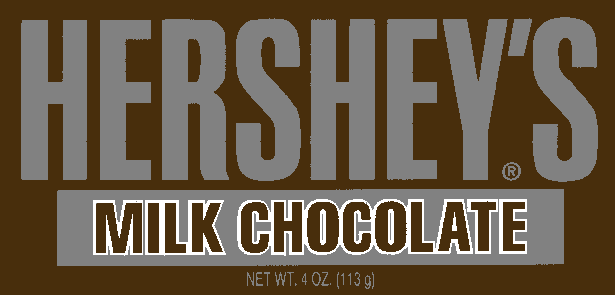April 27th, 2008 · Comments Off on Chocolate affects History: Health Benefits
 Introduction Chemical Composition History affects Chocolate: Spread and Innovation Chocolate Affects History: Economics Chocolate Affects History: Health Benefits Chocolate Affects History: Pop Culture
Introduction Chemical Composition History affects Chocolate: Spread and Innovation Chocolate Affects History: Economics Chocolate Affects History: Health Benefits Chocolate Affects History: Pop Culture
There are many claimed health benefits of chocolate that are currently being researched. Chocolate is said to benefit the circulatory system. It has also been suggested that chocolate has anti-cancer properties, acts as a brain stimulator, aids concentration, lowers blood pressure, prevents coughs and acts as an aphrodisiac.
However, the fat in chocolate has also been linked to the nation’s obesity trends. Lead poisoning is also a concern if a person ingests high levels of chocolate.


[Read more →]
Categories: Chocolate (Theobromine)
Categories: Chocolate (Theobromine)
April 27th, 2008 · Comments Off on Chocolate affects History: Economics
Introduction Chemical Composition History affects Chocolate: Spread and Innovation Chocolate Affects History: Economics Chocolate Affects History: Health Benefits Chocolate Affects History: Pop Culture
Chocolate is a huge trade commodity. The average American consumer consumes approximately 25 pounds of candy (including chocolate) each year and adult consume more than kids. 50 million people around the world depend on chocolate for their livelihood according to the World Cocoa Foundation. Cacao cultivation has also caused colonization and slavery and exploitation throughout Latin America and Africa. Some human rights groups say that the exportation of cacao still has many negative effects on third world countries. For example, two thirds of cocoa production today is in West Africa, with approximately 43% coming from Cote d’Ivoire. Human rights organizations claim that up to 90% of the cultivation in West Africa is done by slave labor.
Consumers can buy Fair Trade chocolate which is certified to guaruntee that it was produced without slave labor and a fair sale price was given to the people who produced it.

[Read more →]
Categories: Chocolate (Theobromine)
Introduction Chemical Composition History affects Chocolate: Spread and Innovation Chocolate Affects History: Economics Chocolate Affects History: Health Benefits Chocolate Affects History: Pop Culture
The history of chocolate begins in Central America where the cocoa bean originates. It was first written about by the Mayas in 500 A.D. It was prepared mixed with chiles, vanilla and pimento as a drink called xocoatl for royalty in the Aztec culture: Montezuma allegedly drank it up to 50 times a day.

Chocolate would probably not have spread past Central America if Cortez and his conquistadores hadn’t brought it back to Spain after their conquest of Tenochtitlan. Later it was mixed with sugar instead of chiles and its popularity exploded in Europe. Cacao is now cultivated as a cash crop in many different regions of the world including Central and South America and most of all, Western Africa.
The high demand for chocolate led to innovations in the 1800’s. Dutchman Coenraad Johannes van Houten made cocoa powder and cocoa butter in 1828. The Cadbury brothers made one of the first eatable chocolates in 1849. David Peter, a Swiss candle maker, invented milk chocolate in 1867 with the help of his neighbor, a baby-food manufacturer Henri Nestle. To this day, chocolate quality and innovation is associated with these names and nationalities. More chocolate innovations were caused by the competition between the two leading American chocolate companies, Hershey and Mars.


[Read more →]
Categories: Chocolate (Theobromine)
April 27th, 2008 · Comments Off on Chemical Composition
Introduction Chemical Composition History affects Chocolate: Spread and Innovation Chocolate Affects History: Economics Chocolate Affects History: Health Benefits Chocolate Affects History: Pop Culture
Theobromine


3,7-dihydro-3,7-dimethyl-1H-purine-2,6-dione
Theobromine is a methylxanthine or mild stimulant that is similar to caffeine and occurs naturally in cocoa beans. It has less impact on the central nervous system than caffeine but more on the heart. Interestingly, the structure contains no bromine. Instead, the name comes from the name of the Theobroma cacao tree. Theobroma roughly translates to “food of the gods.”
Theobromine was first isolated from cacao in 1878 and was synthesized from xanthine by German chemist Hermann Emil Fischer who won the Nobel Prize for Chemistry in 1902.
The concentration of theobromine varies based on the type of chocolate. Hershey’s cocoa powder contains 2.16% of theobromine. Dark chocolate and semi-sweet chocolate contain more and pure cocoa extract can contain up to 10%.
A combination of theobromine and some other chemicals in chocolate have been shown to affect serotonin levels in the brain. A recent study shows that eating chocolate stimulates brain activity and heart rate more than kissing.
The theobromine in chocolate can lead to poisoning in animals such as dogs and cats because they can’t metabolize it fast enough.
Other chemicals: Chocolate also contains small amounts of anandamide, which has been shown to bind to the same receptor in the brain as THC (marijuana) Chocolate also contains phenylethylamine which increases dopamine and could possibly treat depression.
[Read more →]
Categories: Chocolate (Theobromine)
Introduction Chemical Composition History affects Chocolate: Spread and Innovation Chocolate Affects History: Economics Chocolate Affects History: Health Benefits Chocolate Affects History: Pop Culture

Warning: This presentation may cause chocolate cravings
Chocolate is one of the most craved substances on Earth and has many different chemical qualities and claimed health benefits.

Chocolate comes from the cocoa beans from the Theobroma cacao tree, which originates in South America.
There are approximately 300 different chemicals and compounds that make up chocolate, some of which are thought to have beneficial effects on the human body.
Chocolate’s popularity as a result of its chemical structure has affected history in a variety of ways.
[Read more →]
Categories: Chocolate (Theobromine)
![]() Introduction Chemical Composition History affects Chocolate: Spread and Innovation Chocolate Affects History: Economics Chocolate Affects History: Health Benefits Chocolate Affects History: Pop Culture
Introduction Chemical Composition History affects Chocolate: Spread and Innovation Chocolate Affects History: Economics Chocolate Affects History: Health Benefits Chocolate Affects History: Pop Culture![]()











